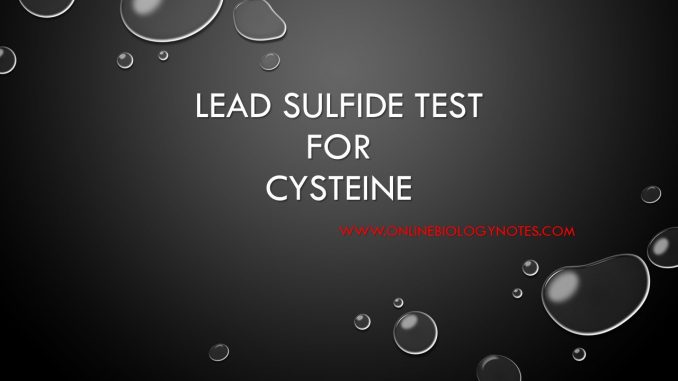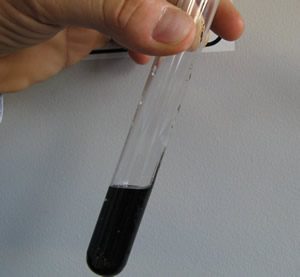
Lead sulfide test: Detection of amino acid containing sulfhydral group (-SH)
Objective:
- to detect amino acid containing sulfhydral group (-SH) ie cysteine
Principle of lead sulfide test:
When cysteine is heated with strong alkali like NaOH, some of the sulphur is converted to sodium sulphide (Na2S) which can be detected by precipitation as lead sulphide (PbS) from alkaline solution.
Reaction:
sulfur in cystine + 40% NaOH → heating→ Na2S
Na2S + Pb (CH3COO)2 →(black precipitate) PbS
Reagents:
- test solution: 1 % cysteine, 1 % glycine, 5% egg white (albumin)
- Foli’s reagent: Lead acetate (Pb (CH3COO)2)
- 40 % NaOH
Procedure of lead sulfide test
- Take 1ml test solution in dry test tube.
- Similarly, take 1 ml distilled water in another test tube as control.
- Add 2ml of 40 % NaOH and mix well.
- Now add 1ml Foli’s reagen ( lead acetate) t to all test tubes.
- Heat over the flame of Business burner.
- Look for the development of black precipitate.
Result interpretation:
- Positive lead sulfide test: Black ppt ( cysteine)
- Negative lead sulfide test: glycine, egg albumin

** Methionine does not give lead sulfide test because sulfur in methionine does not split in presence of alkali.
